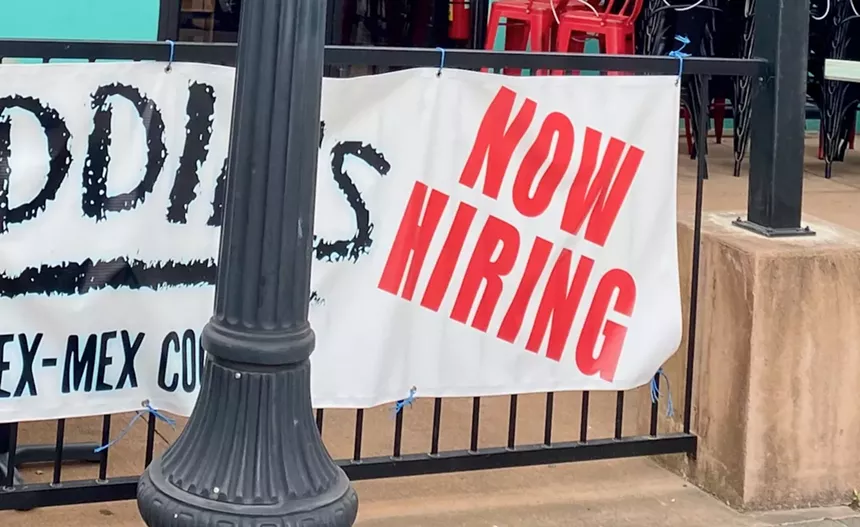Restaurant Labor Shortage: Is There An End in Sight?
Last week we reported on the soul food restaurant Savorite in Plano after it appeared on HBO’s sports documentary, Hard Knocks, which stars the Cowboys this season. JaQuan Hardy, a running back trying to make the final cut, dined at the restaurant with an HBO camera crew in tow.
What a once-in-a-lifetime opportunity for the independently owned restaurant; a public relations gift on a platter.
Or so you’d think.
The next day it was a little surprising to see that while the restaurant was open, the dining room was closed; yellow tape partitioned off the tables, which had chairs stacked on top of them. The food was for was takeout only.
The cashier said it wasn’t their choice to have the dining room closed, rather they couldn’t hire enough workers because of the ongoing labor shortage in the restaurant industry. The day after being on HBO, it was just her, the owner/cook and one other crew member fetching online orders, walk-ins and a phone ringing off the hook.
And while some state and federal benefits are being cut that could allow restaurants to better staff full restaurants, it could be a slow go.
Many state and federal unemployment benefits were increased over the past year and a half to help workers get through economic hardships caused by the pandemic. Just this weekend, the enhanced federal unemployment benefits ended for much of the country (the state of Texas chose to cut off that flow of money back in June).
Dean Stansel is an economist at SMU Cox’s Bridwell Institute for Economic Freedom and says those benefits put many workers in a situation where they would have to take a pay cut to go back to their job.
“The federal unemployment benefit bonus was especially impactful for lower-wage workers, like many of those in the restaurant industry, so its termination should have a particularly strong positive impact in that industry,” Stansel says.
Stansel points out that according to the Bureau of Labor Statistics, the 24 states that ended the federal unemployment benefit bonus early saw an average unemployment rate in July (the most recent month available) of 4.3%. In the other states, it was 5.8%.
With ongoing labor shortages, restaurants are stymied by not being able to open or serve at full capacities, like Savorite.
“Many of the restaurants we all enjoy are small businesses that operate on very thin margins,” Stansel says. “By preventing them from being able to fully reopen the federal unemployment benefit bonus essentially drove some of them out of business.”
On Aug. 26, The Texas Workforce Commission (TWC) announced that the state’s extended benefit (EB) program is being cut the week ending Sept. 11. By law, this extra infusion of unemployment cash is available during times of high unemployment rates, 6.5% or higher. Texas started issuing EB in May 2020. On Aug. 20 that rate fell below 6.5%, triggering the end of the program.
From an economic standpoint, Stansel says this, like the cessation of federal benefits, should persuade more people to re-enter the job market. And there are jobs out there: the leisure and hospitality sector in Texas is still down 7% from pre-pandemic levels. But, with a record number of job openings for the past five years, will workers flock back to restaurants?
Stansel says he’d be surprised if the service industry doesn’t bounce back eventually. However, it could be a while. “Service is about 4.6 million behind [pre-pandemic numbers]. Leisure & hospitality about 1.7 million, and food and drinking about 1 million. The expiration of these extra benefits will help, but those are some large gaps. So, will restaurant hiring woes continue for a while? I would think so.”










